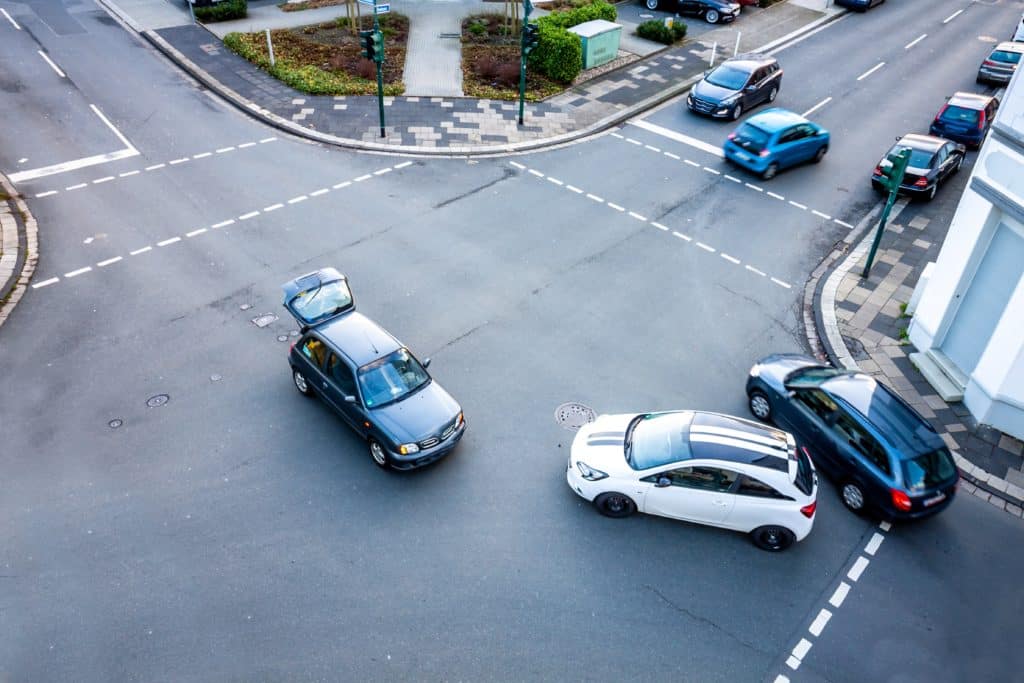
Drones are fast becoming a go-to technology for accident reconstruction, used by law enforcement, insurance companies and lawyers trying to establish blame after a crash. One of the biggest benefits in using a drone for accident reconstruction is that it significantly reduces the amount of time needed to collect a sufficient amount of data to map out the scene of an investigation.
In older approaches, investigators used pencils and tape measures, manually identifying skid marks and important parts of the scene to reconstruct the cause of an accident by marking x’s and o’s on graph paper. This kind of accident reconstruction could take anywhere between six to eight hours, resulting in long delays for the roadway on which the accident took place.
In more recent times, laser scanners have been used to help speed up this manual approach, however even with this improvement, accident mapping can still take two to three hours to complete.
How Drones Help Reconstruct Accidents
Drones offer a speedier, more accurate solution. With a drone, investigators can map an accident scene within just five to eight minutes. The time saved is not just an improvement to the efficiency of the investigation – it can literally help save lives!
Drones help reconstruct accident scenes by collecting visual data that can be processed using mapping software into 3D models or orthomosaic maps of the scene. Some common drones used for accident reconstruction are DJI’s Inspire 2 paired with the ZenMuse X7 and the Phantom 4 Pro, however there are many different kinds of mapping drones out there that are being utilised.
It is extremely important to be accurate when collecting data to create these maps for the purposed of accident reconstruction, since a relatively small error in the data could make it appear that a different scenario caused the accident and lay blame for the crash on the wrong person.
How Using Drones For Accident Reconstruction Can Help Keep People Safer
When first responders arrive at the scene of a car crash, they have four priorities:
- Make sure the people involved are safe – identifying injuries and getting medical care for those who need it.
- Make sure that the scene is safe – ensuring that nothing is in danger of exploding, collapsing or otherwise presenting a danger to those in the area.
- Secure and collect the evidence – the accident site is not only a place where people need help, but it’s also a crime scene that needs to be investigated in order to determine why the accident happened.
- Working quickly to clear the road – the longer roads are closed due to an accident, the higher the changes that another accident or several others may happen.
You have probably noted that the third and fourth priorities listed her directly contradict one another. On the one hand, first responders are trying to preserve the scene and collect enough evidence to reconstruct the accident, on the other hand, they are trying to clear the area quickly to avoid further accidents.
Anything that can be done to speed up the collection of evidence can literally save lives, since data shows that the more time the road is blocked, the more likely is it that another accident will occur. It is within this window of time that the change of ‘secondary accidents’ (accidents related to a sudden stop in traffic, such as a pileup), go up significantly. This is where the drone steps in.
By significantly speeding up data collection for accident reconstruction, drones are helping investigators clear roads a lot quicker after an accident, and thereby helping to reduce the potential for secondary crashes.
However, it is not just local authorities that use drones for accident reconstruction, insurance companies have also started using drones to better assess insurance claims made by people involved in car crashes. Also, lawyers that specialise in personal injury law related to crashes have also started using drones in accident investigations. They do this by creating maps for accident reconstruction purposes as well as to create better visuals for juries. Do you or anybody you know use drones for accident reconstruction and have any related information to share? Let us know by tweeting us!
